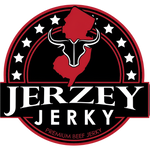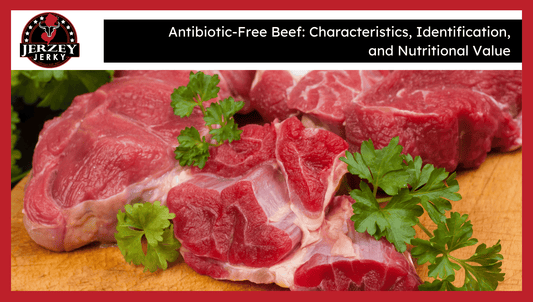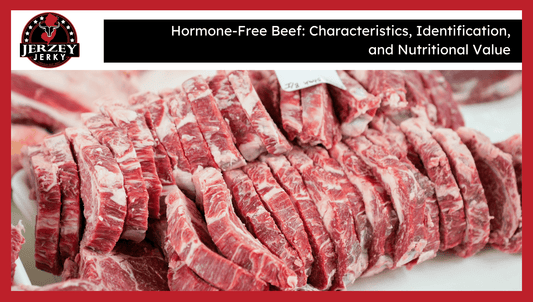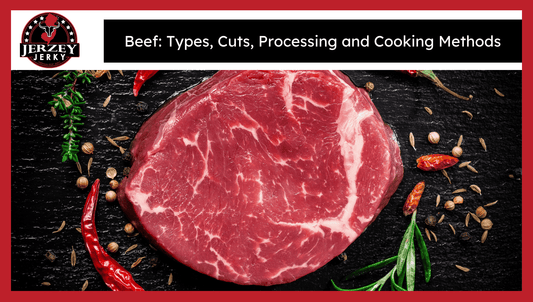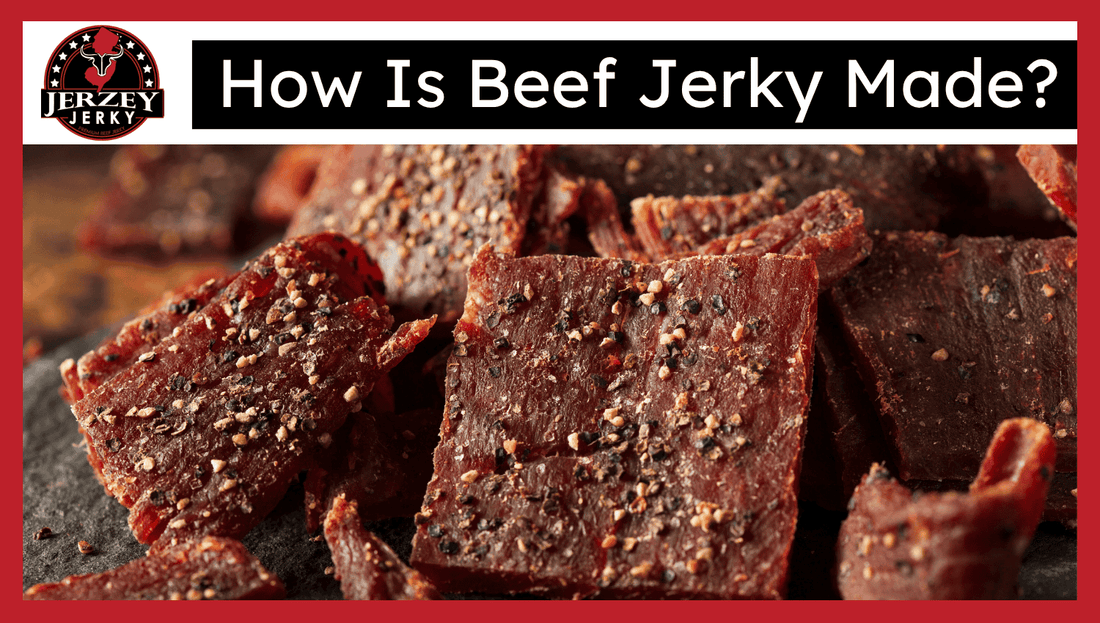
How Is Beef Jerky Made?
Beef jerky is a dry treated meat that makes it longer-lasting by taking away the moisture, which minimizes the growth of bacteria. The Meat Science Extension at the University of Wisconsin-Madison stated that drying beef to water contents less than 20 percent increases the shelf life, and up to 85 percent of its protein remains in it.
It is done through three main steps: crushing, frying, and marinating. All of these steps impact the flavor, texture, and safety. Jerky is made exclusively with lean cuts and all visible fat is cut off. Strips are also kept at a thickness of 1/4 inch so that they dry evenly and are easy to handle.
The marinating adds flavour and helps in preservation. Salt, sugar, soy sauce, and vinegar are used in recipes. Use USDA guidelines that recommend using the refrigeration environment for 6 to 24 hours of marinating. Some drying techniques are the use of dehydrators, ovens, or wood smokers at 130-175°F. Drying takes 4 to 12 hours, based on how thick the meat strips are.

What is the Step-by-Step Beef Jerky Preparation Method?
Here is the procedure for making beef jerky:
- Meat Selection: Choose lean beef cuts such as top and bottom round, flank or sirloin. These slices have a consumption rate of less than 10 percent fat. Stoltzfus Meats and food safety guidelines explain that low-fat meat slows down spoilage, ensures safe air-drying, and extends shelf life.
- Partially Frozen meat: Freeze the fish for 30-60 minutes. A little freezing toughens muscle fibers enabling fat-free slicing. The USDA food safety materials affirm that this action enhances control during the slicing process and minimizes the chances of risky or lumpy meat pieces.
- Cut the meat: Slice strips to 1/4 inches thickness. Cut across the grain to make tender or along the grain to make chewy. Thick consistency facilitates level drying, hence reducing the survival of bacteria. Ohio State University Extension affirms this to be a requirement in maintaining jerky quality and safety.
- Marinade: Combine soya paste, Worcester, onion, garlic and black pepper. These ingredients with salt and acid hinder the growth of bacteria. Marination also enhances flavor and facilitates safer dehydration due to the reduction of surface contamination.
- Drain and Pat Dry: Remove the meat from the marinade and gently dry it with paper towels. This step dries away any extra moisture which slows down the drying. The uneven dehydration is favored by surface wetness. Drying techniques based on research emphasize this as an effective measure of food safety and efficiency.
What are the Drying Methods for Beef Jerky?
Here are the top seven drying methods for beef jerky:
- Oven Drying: Preheat the oven to 160°F. Lay meat strips on racks and put some space between them. Open the door a little bit to ventilate it. Such a technique is suitable for small-scale production, delivering a steady heat and the safe drying of meat at home in a kitchen setting.
- Dehydrator Drying: Set the food dehydrator between 130°F and 160°F. It provides an even supply of air and heat, which dries jerky. It needs less supervision, and it does not lead to excessive drying. It is a good one to use for beginners and big batch jerky makers.
- Air Drying: Hang strips of meat in a clean, well-ventilated place at a constant temperature and low humidity. This low-impact approach relies upon the environment and must be meticulously managed to avoid spoilage. It is less popular but it maintains the use of the traditional drying methods.
- Smoker Drying: Cook dry meat in a smoker with a low temperature ranging between 140°F and 160°F. It is a technique that involves drying and smoking flavor. It yields speck jerky with the distinctive taste and smell, which is popular among lovers of smoked meat products.
- Traditional: Sun drying: Put a very thin slice of meat on a hot, dry day in the sunlight. Cover with fine netting to keep out insects. This ancient technique relies on the presence of powerful sun and dry air to dry and avoid due to the growth of bacteria outside.
- Advanced Drying Infrared: Infrared drying applies radiation heat to quickly remove moisture content in meat. It reduces the length of drying but keeps the temperatures even. Typically applied in an industrial environment, the process allows high-volume production of jerky of uniform quality.
How to Know When Jerky Is Prepared
Here are the ways to identify when jerky is prepared:
- Bend Test: Pick up one of the strips of jerky when they are cool and bend them over. It ought to flex and develop small cracks without breaking. This indicates a loss of moisture with proper loss of moisture. A clean break indicates over-drying, whereas if there is no crack, it is still undercooked and unsafe for storage.
- Texture: Jerky is externally moist with an internal chewiness. It is not supposed to feel brittle or soft. Dehydration is balanced and the internal structure is right since a well-dried strip does not bend easily or break, and it is difficult to tear.
- Temperature Check: The beef reaches an internal temperature of 160°F during cooking. This destroys pathogenic bacteria such as E. coli. USDA regulations demand that this stage be reached before the onset of dehydration in order to keep jerky in a safe range to consume and store at room temperature.
What is the Cooling and Storing Method of Beef Jerky?
Cool the jerky at room temperature and store it for 1 hour. Condensation is the result of instant wrapping holding steam. Kansas State University food handling guidelines support that moisture within the packaging enhances mold presence.
Keep jerky in airtight bottles of glass, zipper bags, or vacuum packages. This restricts exposure to oxygen reducing the rate of spoilage. It extends shelf life due to the presence of oxygen absorbers inside sealed packs which keep it dry even during ambient storage.
Jerky has a product life of 1 to 2 weeks in a room environment. Freshness is prolonged to 30 60 days when refrigerated. Cold-stored vacuum-sealed jerky is safe to eat for 2 to 6 months.
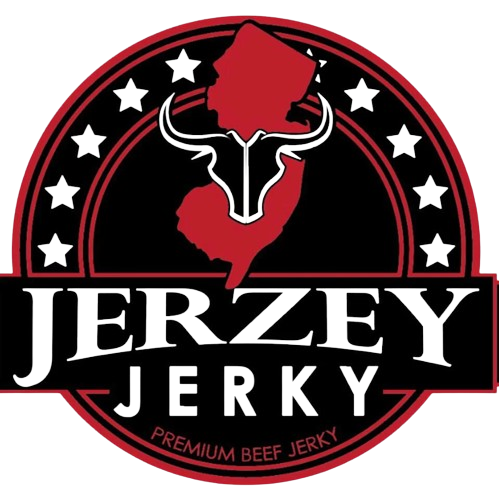
 2025-07-23
2025-07-23
 Wayne Holland
Wayne Holland
